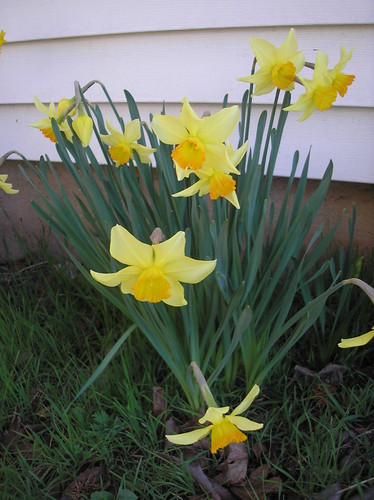
This week as part of the Winter Wildflower blog-a-thon at Wildflower Morning, we were asked to come up with some literary connection to wildflowers. I remembered that I had just the thing for this entry.
I recently read a really interesting book about flowers. 100 Flowers and How They Got Their Names by Diana Wells was a quick, fun read and was packed full of interesting tidbits about how both garden and wildflowers got their names.
According to the author about the violet:
Common Names: Violet, pansy, heart's-ease, Johnny-jump-up, love in idleness
Botanical Name: Viola
She also relates the story of how violets became associated with love. Let's just say it has something to do with the Greek gods Zeus, Hera, and a heifer.
She includes literary connections to violets by referring to works that violets play a part in like Shakespeare's A Midsummer Night's Dream. She also relates a story about violets that has to do with Napoleon.
"When Napoleon was banished to Elba, he said he would 'return with the violets.' When he did return, Josephine was dead, and he picked violets from her grave before being exiled again to St. Helena. They were found in a locket, along with a lock of hair, when he died."
We are going to keep this little book handy as we enter the spring term and our study of garden flowers. Each flower has a small illustration at the beginning of the chapter. I highly recommend it for anyone who is interested in short accounts for many common flowers. I got my book on bookmooch.com but you can find it used on amazon.com for less than a dollar.
Barb-Harmony Art Mom
Some other flowers included in the book: dahlia, daffodil, daylily



According to the author about the violet:
Common Names: Violet, pansy, heart's-ease, Johnny-jump-up, love in idleness
Botanical Name: Viola
She also relates the story of how violets became associated with love. Let's just say it has something to do with the Greek gods Zeus, Hera, and a heifer.
She includes literary connections to violets by referring to works that violets play a part in like Shakespeare's A Midsummer Night's Dream. She also relates a story about violets that has to do with Napoleon.
"When Napoleon was banished to Elba, he said he would 'return with the violets.' When he did return, Josephine was dead, and he picked violets from her grave before being exiled again to St. Helena. They were found in a locket, along with a lock of hair, when he died."
We are going to keep this little book handy as we enter the spring term and our study of garden flowers. Each flower has a small illustration at the beginning of the chapter. I highly recommend it for anyone who is interested in short accounts for many common flowers. I got my book on bookmooch.com but you can find it used on amazon.com for less than a dollar.
Barb-Harmony Art Mom
Some other flowers included in the book: dahlia, daffodil, daylily






























